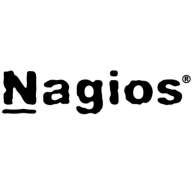

Splunk Observability Cloud and Nagios Core are in the competitive category of IT monitoring solutions. Splunk Observability Cloud holds an upper hand due to its capabilities in data integration, real-time analytics, and advanced visualization, while Nagios Core is preferred for cost-effectiveness and configurability.
Features: Splunk Observability Cloud is notable for its data integration, real-time analytics, and application performance monitoring. It provides extensive customization through dashboards and advanced data visualization. Users value its capability in proactive notification management. Nagios Core is valued for its robust monitoring capabilities and flexibility with plugins. It is highly configurable owing to its open-source nature, offers easily interpretable reports, and supports third-party modules integration.
Room for Improvement: For Splunk Observability Cloud, users recommend enhancements in integration capabilities and pricing structure, alongside improvements in technical support responsiveness and reducing configuration complexity. Nagios Core faces challenges in installation and configurability, with users requesting enhancements in its user interface, better integration with modern tools, and scalability for larger environments.
Ease of Deployment and Customer Service: Splunk Observability Cloud is versatile with its deployment options across on-premises and cloud environments while being generally praised for its support, albeit sometimes inconsistent in responsiveness. Nagios Core, mainly deployed on-premises, is appreciated for its community-based support though it demands higher expertise due to its open-source nature and lack of direct technical support.
Pricing and ROI: Splunk Observability Cloud is considered expensive due to its data volume-based model. However, users report effective ROI via operational efficiency despite costs. Nagios Core, as an open-source solution, incurs lower direct costs, though requires investment in technical expertise. The ROI for Nagios Core users comes from its flexibility and absence of licensing fees.


This is IT infrastructure monitoring's industry-standard, open-source core. Free without professional support services.
Splunk Observability Cloud combines log search, data integration, and dashboards for seamless monitoring, enhancing infrastructure visibility and security. Its cloud integration and scalability support diverse environments, improving operational efficiency.
Splunk Observability Cloud offers comprehensive monitoring tools with user-friendly interfaces, enabling end-to-end infrastructure visibility. Its real-time alerting and predictive capabilities enhance security monitoring, while centralized dashboards provide cross-platform visibility. Users benefit from fast data integration and extensive insights into application performance. Despite its advantages, improvements could be made in integration with other tools, data reliability, scalability, and cost management. Users face challenges in configuration complexity and require better automation and endpoint protection features. Enhancing AI integration, alerts, and adaptation for high-throughput services could further improve usability.
What are the key features of Splunk Observability Cloud?In industries like finance and healthcare, Splunk Observability Cloud is implemented for application performance monitoring and infrastructure metrics. Its ability to track incidents and analyze machine data benefits network infrastructure, while distributed tracing and log analysis aid in tackling security threats. Organizations often integrate it for compliance and auditing purposes, enhancing visibility into network traffic and optimizing performance.
We monitor all IT Infrastructure Monitoring reviews to prevent fraudulent reviews and keep review quality high. We do not post reviews by company employees or direct competitors. We validate each review for authenticity via cross-reference with LinkedIn, and personal follow-up with the reviewer when necessary.